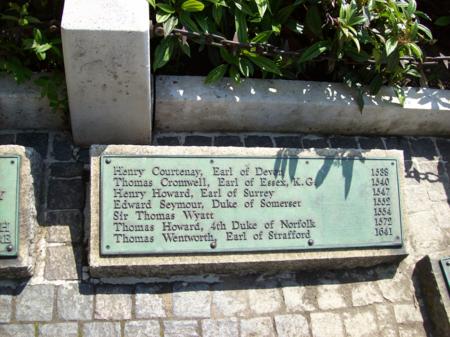"On the eve of the Conversion of St. Paul, the King being mounted on a great horse to run at the lists, both fell so heavily that every one thought it a miracle he was not killed."
Many articles and even whole books have been written about this fateful event and how such a traumatic experience, both physically and psychologically, may have permanently changed the King's mental stability. This article, however, instead explores a little of the history of the joust and why Henry VIII was such a fervent lover of the sport.
Jousting has a long and rich history that stretches back several hundred years before the Tudor period. In the 1100s warfare included mounted cavalrymen with heavy lances who would charge at their enemy in formation. Therefore, jousting was initially used as a means for knights to train for warfare. Jousting tournaments consisted of mock battles with dozens or even hundreds of men all riding horses and carrying lances. They would attack one another with their lances, swords and maces across a large area such as the countryside. Then from around the mid 1300s the more formalised style of jousting began where one man charged at another.
Jousting soon became popular events where people would flock to watch noblemen fight for the honour of their king or queen. Under Henry VIII, jousting celebrations became huge spectacles designed to impress and overwhelm spectators. Men would dress up in disguises and magnificent and intricate floats with spectacular decorations were created. In addition, lavish prizes were also granted to the winner of such events.
The joust became a highly formalised event and there was a great deal involved in organising a joust. A suitable area needed to be found and then set up, and men had to be chosen to represent various members of royalty. The area designated to hold the joust was called the list, a roped off area where the two competitors challenged one another. Down the centre of the list a barrier was erected to create two lanes for the jousters to ride down. This barrier was initially known as the tilt and was first made out of cloth and then in the early 16th century was made out of wood. The tilt also allowed riders to focus more on their opponent rather than steering their horse. Over time, the tilt became known as the tilt barrier and the act of riding down the list was called tilt or tilting.
Men needed to be physically fit and very strong to be able to participate in a joust. Not only was their armour extremely heavy, they also had to be able to ride a horse at full speed as well as wielding their lace with skill and accuracy. In addition to this, they had to weather any potential blows they may receive to their shield or body.
The rules surrounding jousting are complicated but it was the aim of a participant to strike their opponent upon the shield or armour, or to wield such strength that they could dismount their opponent with their lance. Points were awarded according to where the blow was struck and if the lance was broken. Specialised armour was created for jousters and in many tournaments the participant, rather than the king, would have to supply his own armour, horse and weaponry.
Lances were often blunted but this did not stop an array of injuries or even deaths occurring during a joust. The blow of the lance or falls from horses commonly caused bone fractures, and bones could even be badly broken. While not frequent, death could also be the final result of a joust. For example, King Henry II of France died in 1559 from wounds he received while jousting.
Henry VIII was a passionate and active member of the joust. Previously, the young Henry had been denied the opportunity of jousting in competitions because he was the sole heir to the throne. His father, Henry VII, feared his son may be injured or even worse killed. Yet when Henry came to the throne in 1509 as a young, handsome and extremely athletic king he quickly took to the excitement and chivalry of the joust.
Henry VIII lived by the code of chivalry and aimed to achieve great successes such as King Arthur of legend and the crushing defeats King Henry V achieved in Europe. Jousting closely tied with the code of chivalry as it allowed a man not only to practise and show off his great military skills, but it also allowed him to display his masculinity – something Henry VIII took great pride in. The majesty of a joust also allowed Henry to show off his splendour and wealth to important people and diplomats. They would then return home and pass on how truly chivalrous and powerful the English King was.
Henry VIII participated in many jousts throughout his life, the most famous being in 1511 when an extravagant tournament was held at Westminster to celebrate the birth of his son and heir, Henry, Duke of Cornwall, who tragically died a short time later. He also jousted on the 19th and 20th May 1516, when his opponents had been so dismal that he vowed "never to joust again except it be with as good a man as himself." On 10th March 1524 the King jousted against Charles Brandon, Duke of Suffolk. In a dramatic miscalculation Henry forgot to lower his visor! Brandon was wearing a helmet that gave him very little vision and while people cried for Brandon to halt he could not hear them. He surged forward and struck the inside of the King's helmet, sending splinters exploding over the King's face. Luckily, Henry was not badly injured and laughed the whole incident off. Then, on 24th January 1536, Henry VIII fell from his horse during the joust and in full armour was crushed under the weight of the animal. The fall would have been the equivalent of a 40 mile-per-hour car crash! The King was said to be unconscious for two hours and many feared for his life. Luckily, he awoke but the King was never able to joust again.
You can read more about Henry VIII's jousting accident on 24th January 1536 in Claire's article over at The Anne Boleyn Files - click here - and Tudor Society members can enjoy Claire's video on Henry VIII the Jouster.
Sarah Bryson is the author of Mary Boleyn: In a Nutshell. She is a researcher, writer and educator who has a Bachelor of Early Childhood Education with Honours and currently works with children with disabilities. Sarah is passionate about Tudor history and has a deep interest in Mary Boleyn, Anne Boleyn, the reign of Henry VIII and the people of his court. Visiting England in 2009 furthered her passion and when she returned home she started a website, queentohistory.com, and Facebook page about Tudor history. Sarah lives in Australia, enjoys reading, writing, Tudor costume enactment and wishes to return to England one day. She is currently working on a biography of Charles Brandon, Duke of Suffolk.
Sources
Image: Catalina de Aragon watching Henry VIII of England joust, College of Arms, early 16th century, Wikipedia. Westminster Tournament Roll.
- History of Jousting, History, viewed 22 December 2015, http://www.history.co.uk/shows/full-metal-jousting/articles/history-of-jousting.
- Inside The Body of Henry VIII 2009, documentary presented by Robert Hutchinson, historian Dr Lucy Worsley and Dr Catherine Hood, National Geographic.
- Letters and Papers, Foreign and Domestic, of the Reign of Henry VIII, 1509-47, ed. J.S Brewer, James Gairdner and R.H Brodie, His Majesty's Stationery Office, 1862-1932.
- Levitt, Emma (2014) "'A second king': chivalric masculinity and the meteoric rise of Charles Brandon, duke of Suffolk (c. 1484- 1545)", University of Winchester- Gender and Medieval Studies.
- Lipscomb, Suzannah (2009) 1536: The Year that Changed Henry VIII, Lion Hudson plc, Oxford.
- Mackay, Lauren (2014) Inside the Tudor Court, Amberley Publishing, Gloucestershire.
- Medieval Jousting Tournaments, 2014, viewed 17 October 2015, http://www.medieval-life-and-times.info/medieval-knights/medieval-jousting-tournaments.htm.
- Medieval Rules for Jousting, 2015, Medievalist.Net, viewed 17 October 2015, http://www.medievalists.net/2015/01/07/medieval-rules-jousting/.




Leave a Reply